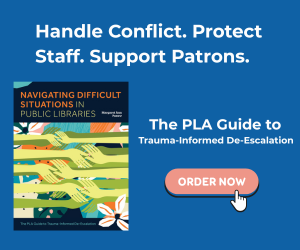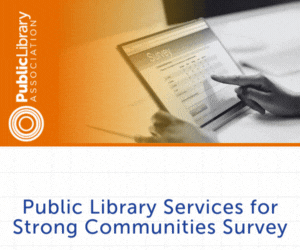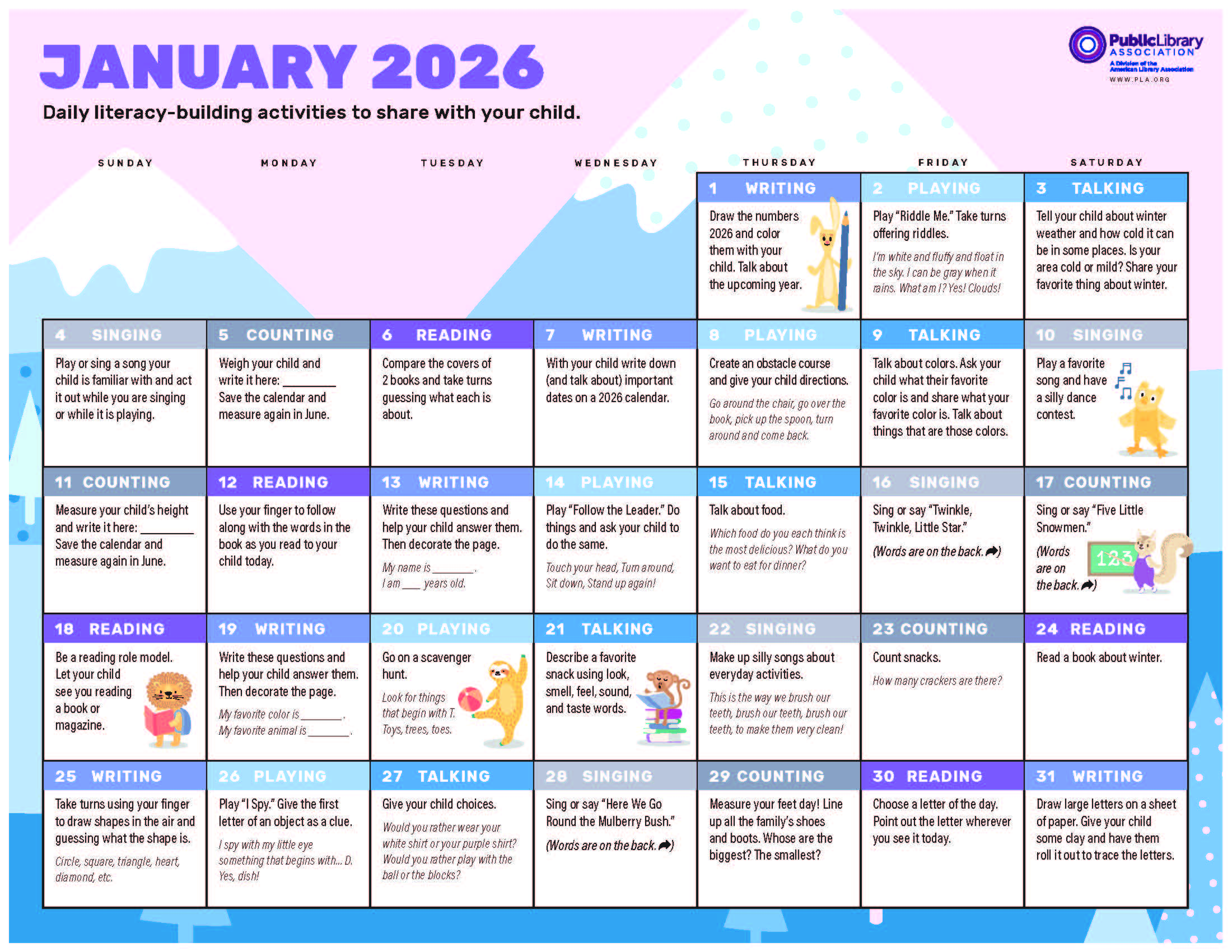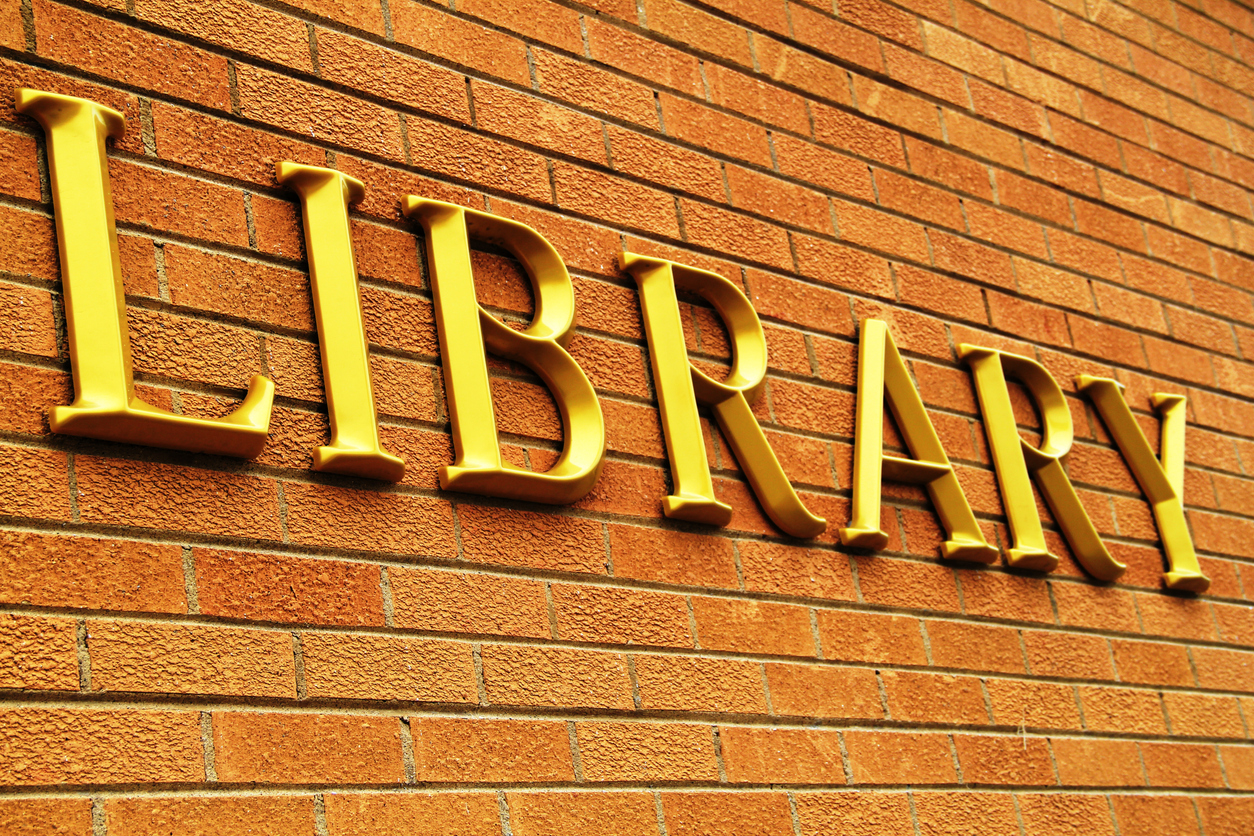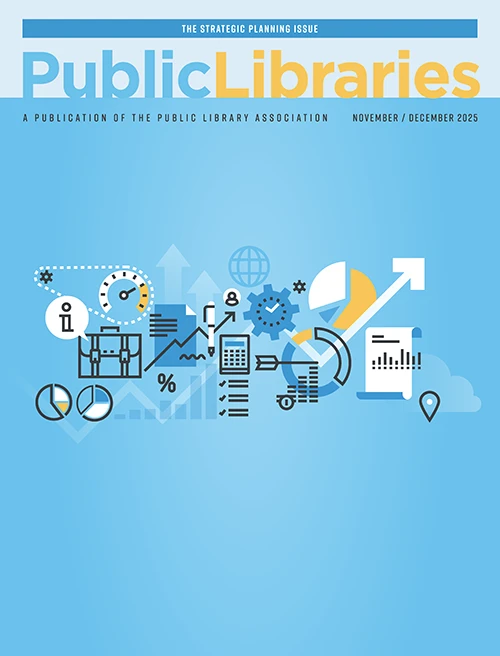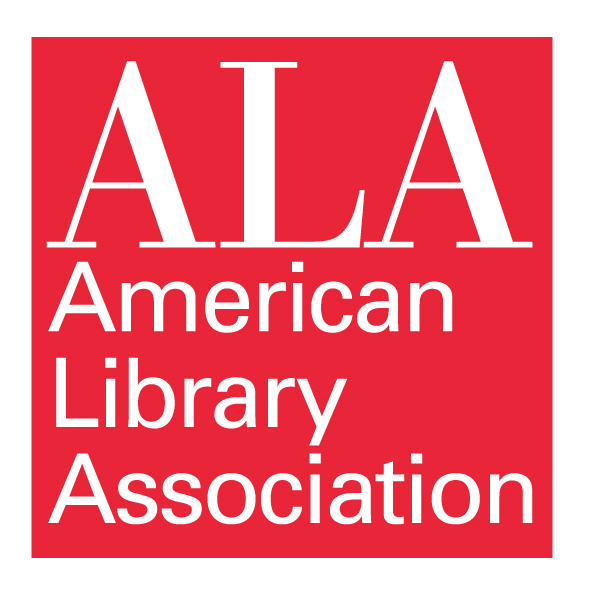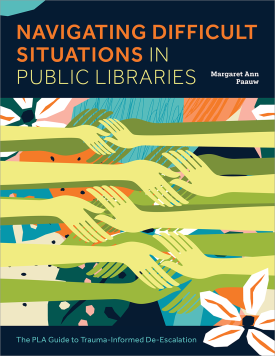FEATURE | Public Libraries in the Age of Fake News
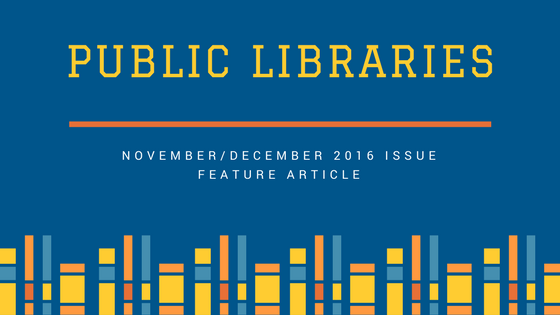
Scrolling through my Twitter feed the afternoon after the election, I was surprised to see so many people tweeting that the results were in: Donald Trump had won the popular vote. It surprised me because earlier that morning I had heard on the radio that Hillary Clinton was pulling even further ahead of Trump. I did some fact-checking and it became clear: I had witnessed another example of the viral spread of fake news.
You have most likely encountered fake news, too. Maybe it was shared, commented on, or liked by a friend or a relative on your social media feed. Perhaps it popped up on a website you were visiting. Regardless of where you encountered it, and whether you paid it any attention or not, the only thing factual about any of those stories is that they are truly fake.
In the haze after the election, one of the many topics to dominate the news has been the proliferation of fake news and how it may have impacted voter decisions. Although fake news has been around longer than the 2016 election season, it stood as an example of how fake news has transformed and how far its reach has extended.
But fake news is not just an election issue; it is an information and media literacy issue. Information literacy is defined as the ability to “recognize when information is needed and have the ability to locate, evaluate, and use effectively the needed information”[1] and media literacy is the ability to “access, analyze, evaluate, and create media.”[2] Both of these competencies are critical for navigating the Internet, especially when confronted with fake news.
Librarians, especially public librarians, are often asked whether libraries are still relevant due to the accessibility of the Internet. These questions aren’t necessarily mean-spirited; many are genuinely curious why anyone still needs a library if they can access limitless information on their smartphone or computer. The truth is, access to the Internet means nothing if someone is unable to discern between fact and conspiracy theory. Librarians can help patrons learn to make that distinction. Essentially, without the appropriate information and media literacy skills, the Internet cannot always meet the needs of the user.
What Is Fake News Exactly?
Fake news is just as it sounds: news that is misleading and not based on fact or, simply put, fake. Unfortunately, the literal definition of fake news is the least complicated aspect of this complex topic. Unlike satire news, which is often hosted by parody websites (think The Onion) and makes light humor of current events and people, fake news has the intention of disseminating false information, not for comedy, but for consumption. And without the knowledge of appropriately identifying fake news, these websites can do an effective job of tricking the untrained eye into believing it’s a credible source. Indeed, its intention is deception.
To be sure, fake news is nothing new. In the wake of the Spanish-American War, William Randolph Hearst and rival Joseph Pulitzer competed for sales and national prominence by selling sensational headlines paired with pictures that were based on little to no factual evidence. In response to journalists who went to Cuba and had no news to report, Hearst was famously quoted as responding, “You furnish the pictures and I’ll furnish the war.” Because the general public had such a skewed interpretation of the situation in Cuba, public opinion was swayed on how the United States should intervene. As a result, the Spanish-American War was considered the first “media war.”[3] But a lot has changed since 1898. The Internet, particularly social media, has completely manipulated the landscape of how information is born, consumed, and shared. No longer is content creation reserved for official publishing houses or media outlets. For better or for worse, anybody can form a platform on the Internet and gain a following. In truth, we all have the ability to create viral news—real or fake—with a simple tweet or Facebook post.
The New York Times published a case study about how easily fake news can go viral. Eric Tucker, a man with just forty Twitter followers, tweeted a picture the day after the election of parked coach buses that he drove by. In his tweet, he claimed that these buses delivered hundreds of organized anti-Trump protestors to Austin (TX). This tweet went viral and was picked up by major media outlets and countless social media sites.[4] When interviewed, Tucker admitted that he didn’t actually have proof that the buses were related to the protest going on in the area. Instead, he surmised they were somehow connected. In reality, the coach buses were hired by Tableau Software for participants attending an annual conference in Austin. Eric Tucker later deleted his tweet, but the damage was already done. As easy as it may be to share fake news, spreading awareness that a story has been proven false is not nearly as simple. Even after a story or source is shown that it lacks credibility, the original post lives on through the thousands of shares, retweets, and duplicated articles. Creating fake news can go viral like wildfire, but debunking it still can’t necessarily put out the flame. I’ll furnish the tweet and you furnish the protest.
What Drives the Creators of Fake News?
Like the aspirations of Hearst and Pulitzer before them, fake news publishers are typically in the game to make money. Instead of printing outrageous headlines to sell more papers, they think up sensational titles designed to get the most clicks. This is called clickbait. The more clicks they get, the more likely their content will be shared and vice-versa. This translates into advertising dollars. The Washington Post reported that some creators of fake news sites can make upwards of $10,000 per month through Google AdSense, a program that converts visitors into dollars based on ads.[5] Interviews with teenagers in Macedonia who run fake news websites revealed that it is a profitable way for them to make money in a struggling economy.[6] The formula is simple: build a website, input ads via Google AdSense, create clickbait-worthy content, share it on social media, drive traffic to website, and make money on posted advertisements. Voila: twenty-first century yellow journalism.
The quest for dollars coupled with shocking headlines makes fake news a perfect partner for social media, a platform where content is easily shared and liked with the click of a button to an overwhelmingly large audience. A 2016 Pew Research Center study found that 79 percent of all Internet users use Facebook.[7] This is an increase from 7 percent in 2015. Furthermore, of those who use Facebook, 76 percent log on daily and 55 percent reported several times per day. And more than half of adults doing so use more than one social media platform, such as Instagram, Twitter, Pinterest, and LinkedIn.
Social Media as News Source
People aren’t just using social media to share personal pictures and status updates. Many are using social media as an alternative to reading the newspaper or watching the nightly news. In another Pew Research Center study, 62 percent of adults reported getting their news on social media.[8] This is an increase from 49 percent in 2012, indicating that there is a significant shift in how news is supplied and consumed in just a few years. As is their intention, headline-grabbing news articles stir up emotional reactions such as fear, shock, anger, and disgust. The likelihood of such news going viral increases exponentially. The problem occurs when the news that is being shared is heavily biased, inflated, or just downright fake.
Another element that has impacted the acceptance of fake news is the general distrust of the media. A recurring theme throughout the 2016 presidential election focused on whether the media is honest or not. Indeed, Trump’s campaign focused on the “corrupt” media, and many have criticized cable news outlets for giving an overwhelming amount of free air time to scandalous topics while only marginally focusing on actual political issues.
This wariness of the media drives many people to trust “underground” news sources as opposed to cable news or a paper at the newsstand. If people don’t feel like the news sources of yesteryear are delivering hardline journalism, they’ll seek it out elsewhere. Their lukewarm feelings toward the media may even be validated if they feel that these alternative resources are delivering the “untold stories” that are overlooked in the “mainstream” media.
The Post-Fact Landscape
A lack of confidence in the news has created what many call a “post-fact” political landscape. National Public Radio (NPR) reported that a general trust in fact-checking has fallen.[9] Those with “low political knowledge” were only 24 percent likely to be interested in fact-checking. Even those who scored highly in their political knowledge were only 46 percent likely to care about reading a fact-check.
Sometimes the disregard for facts and statistics is outright hostile. In an episode of the This American Life podcast, Alex Nowraseth, an immigration expert with the CATO Institute (a libertarian think tank in Washington, DC), described how he is often called a traitor or a liar when he shares statistics about the slowing down of illegal immigration that contradicts the narrative popularized in the election.[10] If someone is consuming information from fake news sites, any statistic from a credible agency or think tank may be construed as a media machine funded or bought by the politicians. When people are already skeptical of the media, they are more apt to turn away from truth and toward sources that are little more than fan fiction.
How Do Libraries Fit In?
Clearly fake news is a huge issue that does not have an easy solution. But whatever steps are taken toward addressing it, public libraries must absolutely be part of the answer. Because of their unique positions as partners, educators, and community champions, librarians have an opportunity to teach information and media literacy, as well as reframe ideas about navigating the Internet.
To begin with, an important step is building trust in the community. Libraries across the country have long been doing just that through the many important programs and initiatives that have created a reputation of libraries as trustworthy organizations. In fact, Americans agree that public libraries are important. The Pew Research Center reported that 77 percent of Americans believe that libraries are essential to providing the resources they can trust.[11] Furthermore, 66 percent feel that closing a public library would have a negative impact on their communities. These numbers are hopeful and inspiring.
From providing outreach to local organizations and at events, to partnering with businesses and schools, meaningful relationships are critical to having honest conversations about needs, fears, and aspirations. If librarians want the community to view their public library as a place that provides valuable information and equitable access, community members must feel that the library is their peer, not their patronizer. In a 2012 American Libraries article titled “Community Reference: Making Libraries Indispensable in a New Way,” librarians emphasized the importance of collecting and analyzing data gathered from community conversations, events, and partnerships.[12] Not only does this help librarians discern upcoming library initiatives and programs, but it also provides a unique perspective of how community members are responding to situations both locally and nationally. In a time where people don’t know which sources to believe, having librarians who can guide them to the credible information is crucial.
In addition to outreach and community engagement, ensuring that the library is a safe space for all is imperative. In the wake of the election outcome, there seems to be a nationwide urgency to have open and honest conversations about issues that divide us. The entirety of the election process proved there are difficult conversations that need to be had. We have to keep talking, even if its uncomfortable. Having respectful and constructive dialogues is a must so that people can feel heard and understood. Public libraries have an opportunity to lead this effort while promising a space where all are welcome regardless of their political or religious affiliation, sexual orientation, immigration status, gender, or race. When people feel like their voices and opinions matter, they may not feel so inclined to find validation through news sources on the Internet. Instead, they may be able to use the connections made in their conversations to form new opinions and critically think about the information they read.
As disturbing as fake news is, it can only exist in perpetuity if readers lack information and media literacy. And it isn’t always easy to spot the difference between fact and fiction. Fake news creators go to lengths to trick readers, and thus, get more traffic to their websites. For example, the fake news site http://abcnews.com.co/ uses a similar URL to the actual ABC News website and even uses a similar logo. Other sites draw on real publication names with a slight adjustment. For example, The Denver Post published a piece addressing a fake news site called The Denver Guardian, which claimed to be the oldest news source in Denver.[13] A cursory glance, typical of scrolling through social media feed, is unlikely to yield a critical analysis of whether a source is credible. But the impact can be lasting. Seeing a certain headline, regardless of whether it is true or not, can leave a lasting impression about a person, event, or issue. That is why it is so important to educate patrons about questioning the information that they encounter while navigating the Internet. Being able to identify credible sources is imperative, particularly amongst young Internet users. The Wall Street Journal reported that a Stanford University study of nearly 8,000 students found that 82 percent of middle schoolers were unable to differentiate between “an ad labeled ‘sponsored content’ and a real news story on a website.”[14] Even in answering reference questions, it is important to walk patrons through the process of finding the information they need. Additionally, introducing patrons to the databases and tools available in the library can open them up to new search strategies. Oftentimes patrons are simply unaware that there are alternative search engines beyond Google.
Public libraries are also well-positioned to provide resources and trainings about how patrons can assess the information that they encounter. Encouraging patrons to think critically about sources (or lack thereof), domain names, pop-up ads, and other indications about source credibility equips them with the tools that they need to be educated readers. Lastly, particularly for patrons who are disgruntled with biased news, a list of non-partisan news sources is handy.
Building trust, creating a safe space, and educating patrons are important in combating fake news. But perhaps the most important step that public libraries can take is advocacy. Although studies indicate a general admiration for the library and what it represents, less than half of Americans (48 percent) age sixteen and older have actually visited a library or bookmobile in the last year.[15] This is a problem because public libraries supply citizens with credible newspapers, magazines, books, and online resources, not to mention the digital resources, ebooks, and other apps that are also available.
Public libraries must keep on advocating for themselves. Obviously this isn’t a new concept for librarians. Rather, it is essentially part of the job description. However, in this post-election environment, it is especially important that libraries advocate on behalf of their own credibility and for the sake of their communities.
So, at minimum, ask people to renew their library cards and encourage regular patrons to flaunt their library pride. At most, develop structured strategies throughout the year. The guide, 52 Ways to Make a Difference—Public Library Advocacy Throughout the Year, offers ideas for building library support on a weekly basis.[16] Advocacy is non-negotiable and a well-informed public depends on it.
Conclusion
The 2016 presidential election may be over, but a lasting effect is in place: the prevalence of fake news. More importantly, this is a time to recognize the importance of public libraries and their potential to provide communities with the resources and information that they need.
Companies are taking steps to combat fake news. Mark Zuckerberg, the founder of Facebook, rolled out a strategy to circumvent the spread of fake news on Facebook.[17] This includes improving detection, flagging news as fake, and creating new streams to report fake news. Additionally, Google is restricting fake news sites from being able to use AdSense.[18] These efforts are important and should be celebrated. Yet they do not solve the reason why people are reading fake news. This is where public libraries are a necessary component to this fight.
From competitive industry analyses, legal resources, and scholarly journal articles to recipe books and the latest thrillers, libraries are stocked with resources and staffed with people who can direct patrons to everything they need. It is necessary for public librarians to educate themselves about credible sources and be prepared to share that information with their community. Educating communities on information and media literacy through tutorials and workshops can curb the consumption of fake news.
More importantly, building meaningful relationships and creating safe spaces for open discourse helps identify the public library as a place that community members can trust and librarians as people they can believe in. Information and media literacy is a bipartisan issue and a functioning democracy demands informed citizens. Public libraries are critical to that effort.
References
[1] American Library Association, Presidential Committee on Information Literacy: Final Report (Chicago: American Library Association, 1989), accessed Dec. 9, 2016, www.ala .org/acrl/publications/whitepapers/presidential.
[2] Media Literacy Project, “What Is Media Literacy?”, n.d., accessed Dec. 9, 2016, https://www.medialiteracyproject.org/learn/media-literacy.
[3] PBS, “Yellow Journalism,” 1999, accessed Dec. 9, 2016, www.pbs.org /crucible/journalism.html.
[4] Sapna Maheshwari, “How Fake News Goes Viral: A Case Study,” The New York Times (Nov. 20, 2016), accessed Dec. 9, 2016, www.nytimes.com/2016/11/20 /business/media/how-fake-news -spreads.html.
[5] Abby Ohlheiser, “This Is How Facebook’s Fake-News Writers Make Money,” Washington Post, Nov. 18, 2016, accessed Dec. 10, 2016, www.washingtonpost.com/news/the-intersect/wp/2016/11/18/this-is-how-the-internets-fake-news-writers-make-money.
[6] Craig Silverman et al., “Hyperpartisan Facebook Pages Are Publishing False and Misleading Information at an Alarming Rate,” Buzzfeed, October 20, 2016, accessed Dec. 10, 2016, www.buzzfeed.com/craigsilverman/partisan-fb-pages-analysis?utm_term=.egZ64p0D8k#.io23gBE1yX.misinfo?utm_term=.qrW6QGaME&mc_cid=97404c62ae&mc_eid=0c1eeb9960#.opqpnYGW8.
[7] Shannon Greenwood, Andrew Perrin, and Maeve Duggan, “Social Media Update 2016,” Pew Research Center, Nov. 11, 2016, accessed Dec. 10, 2016, www.pewinternet.org/2016/11/11/social -media-update-2016.
[8] Jeffrey Gottfried and Elisa Shearer, “News Use Across Social Media Platforms 2016,” Pew Research Center, May 26, 2016, accessed Dec. 9, 2016, www.journalism.org/2016/05/26/news-use-across-social-media-platforms-2016.
[9] Danielle Kurtzleben, “Do Fact Checks Matter?,” NPR.org, Sept. 27, 2016, accessed Dec. 10, 2016, www.npr.org/2016/09/27/495233627/do-fact-checks-matter.
[10] “599: Seriously?”, This American Life Radio Archive, Nov. 3, 2016, accessed Dec. 10, 2016, www.thisamericanlife.org/radio-archives/episode/599 /seriously.
[11] John B. Horrigan, “Americans’ Attitudes Toward Public Libraries,” Pew Research Center, Sept. 9, 2016, accessed Dec. 10, 2016, www.pewinternet.org/2016/09/09 /americans-attitudes-toward-public -libraries.
[12] Amy Long et al., “Community Reference: Making Libraries Indispensable in a New Way,” American Libraries, June 13, 2012, accessed Dec. 10, 2016, https://www.americanlibrariesmagazine.org/2012/06/13/community-reference-making-libraries-indispensable-in-a-new-way.
[13] Eric Lubbers, “There Is No Such Thing as the Denver Guardian, Despite That Facebook Post You Saw,” The Denver Post, Nov. 5, 2016, accessed Dec. 1o, 2016, www.denverpost.com/2016/11/05 /there-is-no-such-thing-as-the-denver -guardian.
[14] Sue Shellenbarger, “Most Students Don’t Know When News Is Fake, Stanford Study Finds,” The Wall Street Journal, Nov. 21, 2016, accessed Dec. 1o, 2016, www.wsj.com/articles/most -students-dont-know-when-news-is -fake-stanford-study-finds-1479752576.
[15] John B. Horrigan, “Libraries 2016,” Pew Research Center, Sept. 9, 2016, accessed Dec. 13, 2016, www.pewinternet.org /2016/09/09/libraries-2016.
[16] Camila Alire, Patty Wong, and Julie Todaro, “52 Ways to Make a Difference— Public Library Advocacy Throughout the Year,” American Library Association, Sept.2009, accessed Dec. 10, 2016, www.ala.org/advocacy/sites/ala.org .advocacy/files/content/advleg/advocacy university/frontline_advocacy/frontline _public/52ways.pdf.
[17] Ashley May, “How Facebook Plans to Crack down on Fake News,” USA Today, Nov. 20, 2016, accessed Dec. 10, 2016, www.usatoday.com/story/tech/2016 /11/19/how-facebook-plans-crack-down -fake-news/94123842.
[18] Nick Wingfield, Mike Isaac, and Katie Benner, “Google and Facebook Take Aim at Fake News Sites,” The New York Times, Nov. 14, 2016, accessed Dec. 10, 2016, www.nytimes.com/2016/11/15 /technology/google-will-ban-websites -that-host-fake-news-from-using-its -ad-service.html.

